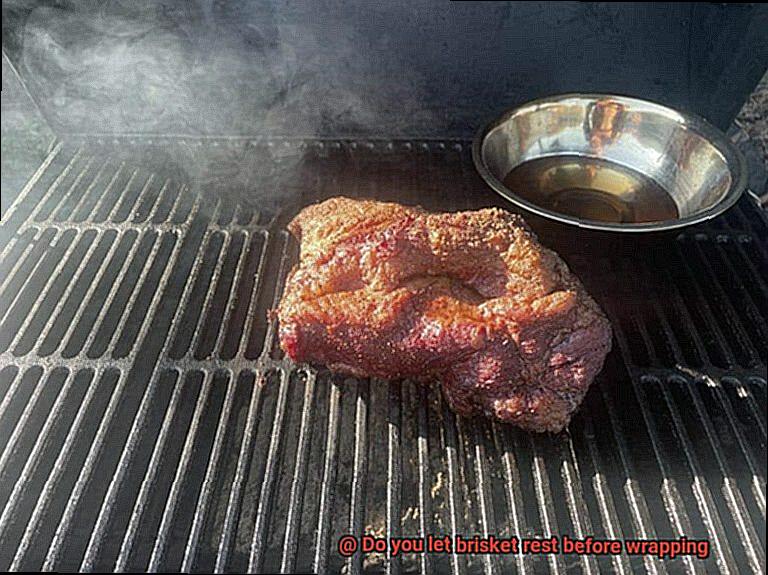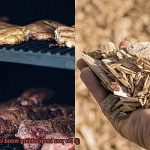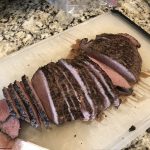Get ready to embark on a tantalizing journey into the world of brisket, that glorious hunk of meat that has pitmasters drooling and taste buds dancing. But here’s the secret sauce that sets apart the novices from the true masters: the art of letting your brisket rest before wrapping.
Now, I get it – patience is not always our strong suit when faced with a plate full of smoky deliciousness. But trust me when I say that this step is an absolute game-changer when it comes to achieving melt-in-your-mouth tenderness and flavor explosion.
So, grab your drink of choice, kick back, and let’s dive into why giving your brisket some well-deserved rest is a non-negotiable for BBQ perfection.
Contents
What is Brisket?
Brisket, an esteemed cut of meat in the realm of grilling and barbecue, holds the key to unlocking a truly tantalizing culinary experience. Derived from the lower chest or breast area of a cow, this beef cut is renowned for its toughness and abundant connective tissue. However, with the right techniques and an understanding of its sub-parts, you can transform this challenging cut into a mouthwatering masterpiece that will leave your taste buds dancing with delight.
The Two Parts of Brisket:
Brisket consists of two distinct parts: the lean flat and the succulent point. The flat, a slender muscle with less fat marbling, is perfect for slicing and is often featured in delectable dishes like sandwiches or enjoyed on its own. On the other hand, the point, sitting atop the flat, is a thicker and fattier section boasting rich marbling and connective tissue. Its abundance of flavorful fats makes it ideal for creating burnt ends or diced for stews.
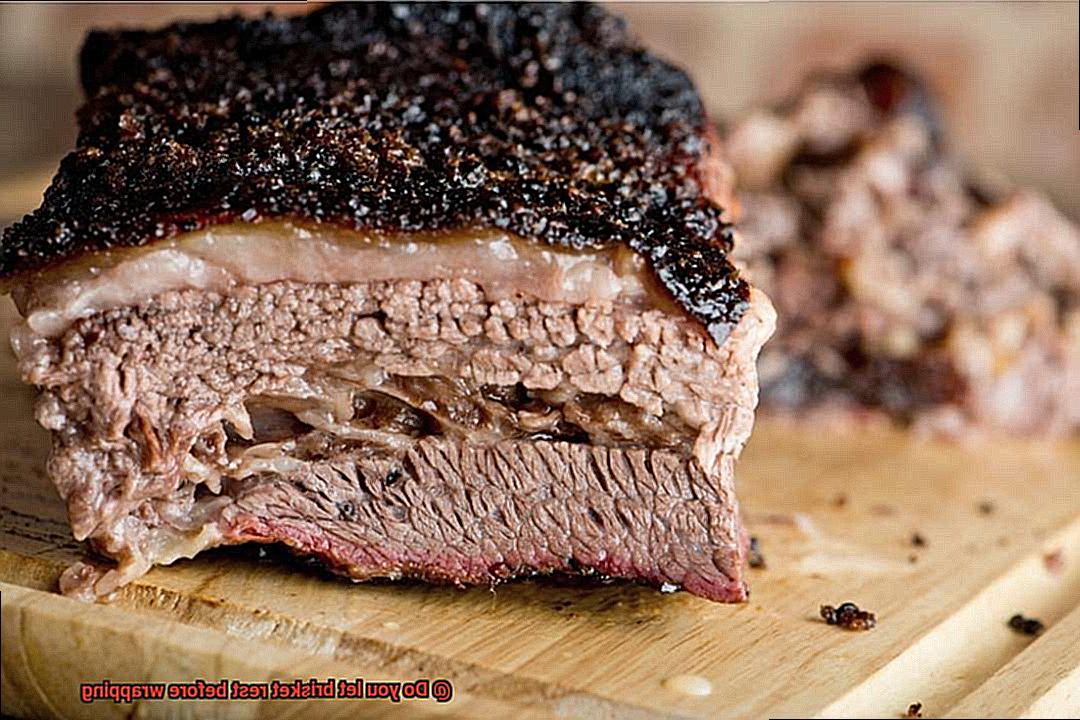
The Low and Slow Cooking Method:
To achieve brisket’s renowned tenderness and flavor, it requires a patient approach with the low and slow cooking method. This technique allows the collagen in the connective tissue to break down slowly over time, resulting in a melt-in-your-mouth experience. During this process, flavors develop and permeate the meat, delivering a smoky, savory, and slightly sweet taste that will leave you yearning for more.
Resting or Immediate Wrapping?
One debate that often arises among pitmasters concerns whether to let brisket rest before wrapping or to wrap it immediately after cooking. Resting allows the meat fibers to relax and reabsorb rendered fat and juices, resulting in an even more succulent final product. However, some argue that immediate wrapping helps seal in moisture and ensures superior crust formation and texture.
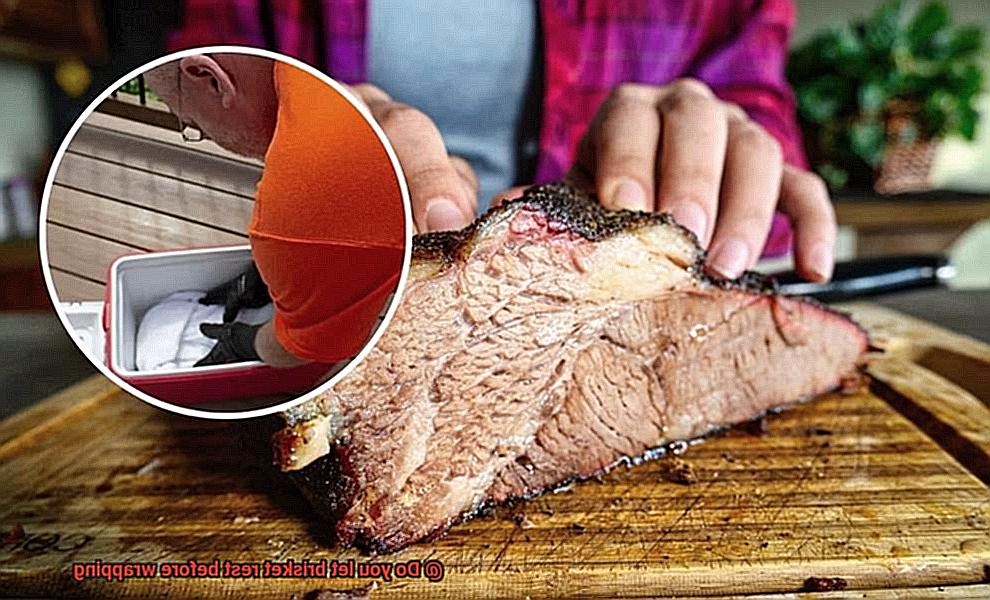
Finding Your Perfect Method:
In the end, the decision of whether to rest or immediately wrap your brisket comes down to personal preference and experimentation. It is recommended to try both methods and find what works best for you. Some pitmasters even combine both approaches, allowing a short resting period before sealing the brisket in foil or butcher paper.
What is Resting?
If you want to reach brisket perfection, then mastering the art of resting is an absolute must. Resting is not just a random step in the cooking process; it’s a scientific technique that can take your brisket from good to extraordinary. So grab your tongs, ignite the flames, and let’s dive into the world of resting.
The Science Behind Resting:
Resting is more than just a waiting game. It’s rooted in science, my friends. When meat is cooked, its muscle fibers contract and push out moisture. If you slice into your brisket immediately after cooking, all those precious juices will escape, leaving you with a dry and lackluster result. But fear not. By giving your brisket some time to rest, those muscle fibers can relax and reabsorb flavorful moisture. The result? A juicier and more tender piece of meat that will make your taste buds dance with delight.
The Benefits of Resting:
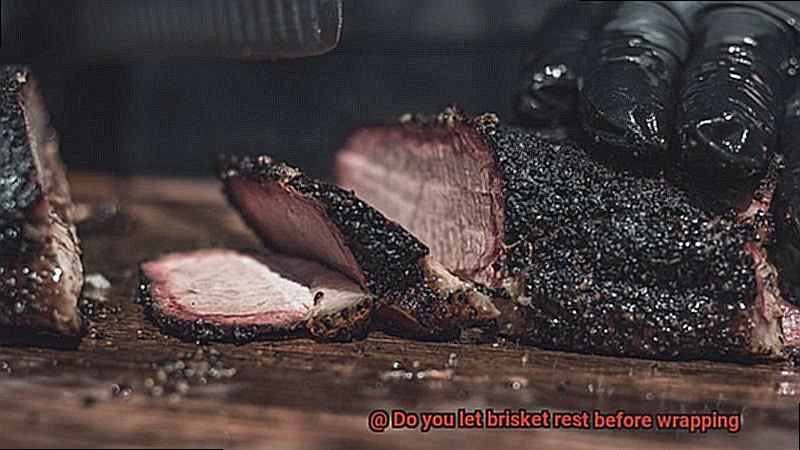
Resting isn’t just about retaining moisture; it’s about unlocking the full potential of flavor. During the resting period, natural enzymes in the meat continue to work their magic, breaking down tough proteins and intensifying the taste. It’s like a flavor infusion session for your brisket. So if you want every bite to explode with flavor, don’t even think about skipping the resting step.
How Long Should You Rest?
The duration of the resting period may vary depending on factors such as size and cooking method. However, as a general rule of thumb, experts recommend letting your brisket rest for at least 30 minutes before slicing into it. This generous waiting time allows the juices to redistribute throughout the meat and for the internal temperature to stabilize. Trust us; the anticipation will be well worth it when you finally sink your teeth into that perfectly tender and flavorful brisket.
The Resting Process:
To properly rest your brisket, treat it with the respect it deserves. Place it on a cutting board or serving platter, allowing it to bask in its own glory. Loosely tent it with a cloak of aluminum foil, keeping the meat warm without suffocating it. We want to preserve those mouthwatering juices, not let them escape into the atmosphere. Let your brisket sit undisturbed during this resting period, allowing the flavors to mingle and intensify like a symphony of taste.
The Benefits of Letting Brisket Rest Before Wrapping
If so, then get ready to unlock the full potential of your brisket by mastering the art of letting it rest before wrapping. This simple yet crucial step is the secret to achieving a tender, flavorful, and succulent masterpiece that will have your taste buds dancing with joy. So, put on your apron, fire up the grill, and let’s explore the incredible benefits of giving your brisket the time it deserves to rest.
Even Out Internal Temperature:
Resting your brisket is like giving it a chance to catch its breath after a long and intense cooking session. By allowing it to rest before wrapping, you give the meat a chance to relax and for the internal temperature to even out. This ensures that every bite is cooked to perfection, with a consistent and tender texture that will melt in your mouth.
Retain Juiciness:
One of the biggest challenges when cooking brisket is keeping it juicy and moist. Heat causes the proteins in the meat to contract and squeeze out precious moisture. But fear not. By letting your brisket rest before wrapping, you give these juices a chance to reabsorb back into the meat, resulting in an explosion of flavor with every bite. Say goodbye to dry and bland brisket forever.
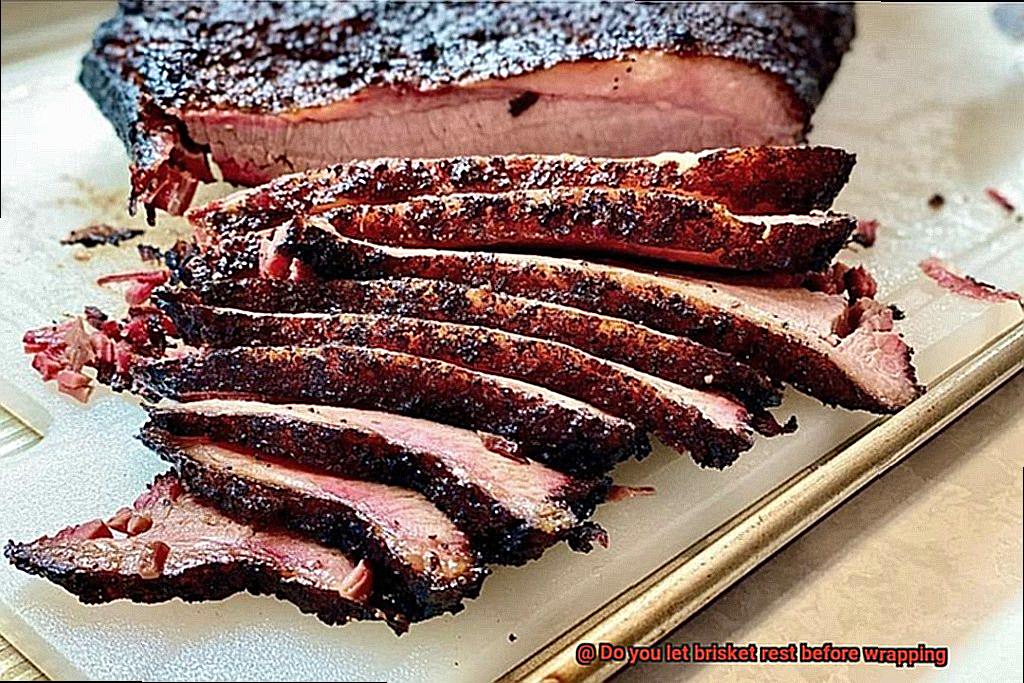
Prevent Sogginess:
Nobody likes a soggy brisket. Wrapping it immediately after cooking can lead to excess moisture accumulating on the surface, resulting in an unpleasantly soggy texture. But by allowing your brisket to rest first, any excess moisture has time to evaporate, ensuring a better overall texture and preserving that mouthwatering bark that we all love.
Firm Up the Bark:
Ah, the bark – that glorious crust on the exterior of the brisket. It’s a true sign of a perfectly cooked piece of meat. By giving your brisket time to rest before wrapping, you give the bark a chance to firm up and develop that irresistible smoky goodness. No more mushy or soft bark – just a beautifully caramelized and flavorful crust that will have you coming back for more.
Easier Handling and Slicing:
Resting your brisket not only enhances its taste but also makes it easier to handle and slice. Freshly cooked meat is hot, tender, and delicate, making it prone to falling apart or losing its shape when sliced. But with a well-deserved rest, the meat cools down slightly and firms up, making it a breeze to achieve clean and uniform slices that will impress even the most discerning barbecue connoisseurs.
How Long Should You Let Brisket Rest Before Wrapping?
Resting brisket before wrapping is a crucial step in the cooking process, allowing the meat to relax and retain its juices, resulting in a tender and flavorful final product. So, how long should you let your brisket rest before wrapping?
The consensus among pitmasters and barbecue enthusiasts is that brisket should be rested for at least one hour before wrapping. During this time, the internal temperature of the meat evens out, and the juices redistribute throughout, resulting in a juicier and more flavorful end product.
However, some experts suggest resting brisket for even longer periods, up to two or three hours. This extended resting time allows the brisket to continue cooking, breaking down collagen, and resulting in a melt-in-your-mouth tenderness.
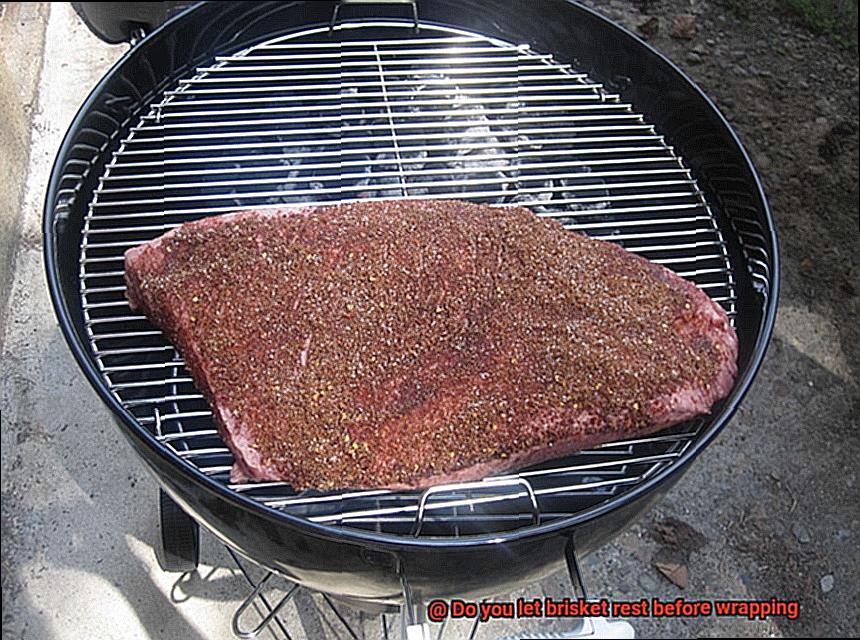
Finding the perfect resting time for your brisket ultimately comes down to personal preference. Experiment with different resting times to discover what works best for you. Remember, the longer you let your brisket rest, the more tender it will become.
To ensure food safety, it’s essential to keep your brisket at a safe temperature during the resting period. You can either keep it in a warm oven or wrap it tightly in foil and store it in a cooler or insulated container.
Resting your brisket not only enhances its tenderness but also makes slicing easier. After resting, the meat becomes firmer and holds together better, allowing you to achieve uniform slices without shredding or tearing.
It’s important to note that after your brisket has been cooked and wrapped, it should undergo a second resting period before serving. This additional resting time allows the flavors to further develop and the meat to become even more tender.
Protecting the Brisket During the Resting Period
The resting period is a crucial step in the grilling process, where the magic happens and your brisket transforms into a mouthwatering masterpiece. But how do you protect this precious creation during its well-deserved rest? Let’s break it down.
First, let’s talk about wrapping. Wrapping your brisket in either foil or butcher paper is key to preserving its juiciness and tenderness. Foil creates a tight seal that retains heat and moisture, resulting in a moist and tender brisket. However, be cautious if you desire a crispy bark, as foil can trap too much moisture and lead to a soggy exterior. Butcher paper, on the other hand, provides a balance between tenderness and bark development. Its breathable barrier allows excess moisture to escape while still insulating the meat and giving it that gorgeous mahogany color.
Regardless of your choice, ensure that you wrap the brisket tightly to avoid air pockets that can cause uneven cooking and dryness. Once wrapped, place the brisket in a clean cooler or insulated container to maintain its temperature. For extra insulation, add towels or blankets around the wrapped brisket.
Now comes the waiting game – the resting period. While an hour is the minimum, giving your brisket two to three hours of rest allows the juices to reabsorb into the meat, resulting in an incredibly tender and flavorful end product.
Arguments Against Letting Brisket Rest Before Wrapping
Imagine the anticipation of sinking your teeth into a perfectly cooked brisket after hours spent tending to it on the grill. But before indulging, there’s a crucial step that should not be overlooked: letting the brisket rest before wrapping. In this blog post, we’ll explore the risks of skipping this important resting period and why it’s essential for achieving the perfect brisket.
Overcooking:
Brisket’s tough fibers and connective tissues require a slow and gentle cooking process to transform into tender, melt-in-your-mouth goodness. Neglecting to let the brisket rest before wrapping can lead to overcooking. Even after removing it from the grill, the internal temperature continues to rise, resulting in dry and overcooked meat.
Moisture loss:
Resting allows the juices within the meat to redistribute, creating a moist and flavorful end product. However, skipping the resting period increases the chance of these precious juices evaporating, leaving you with a dry and lackluster brisket.
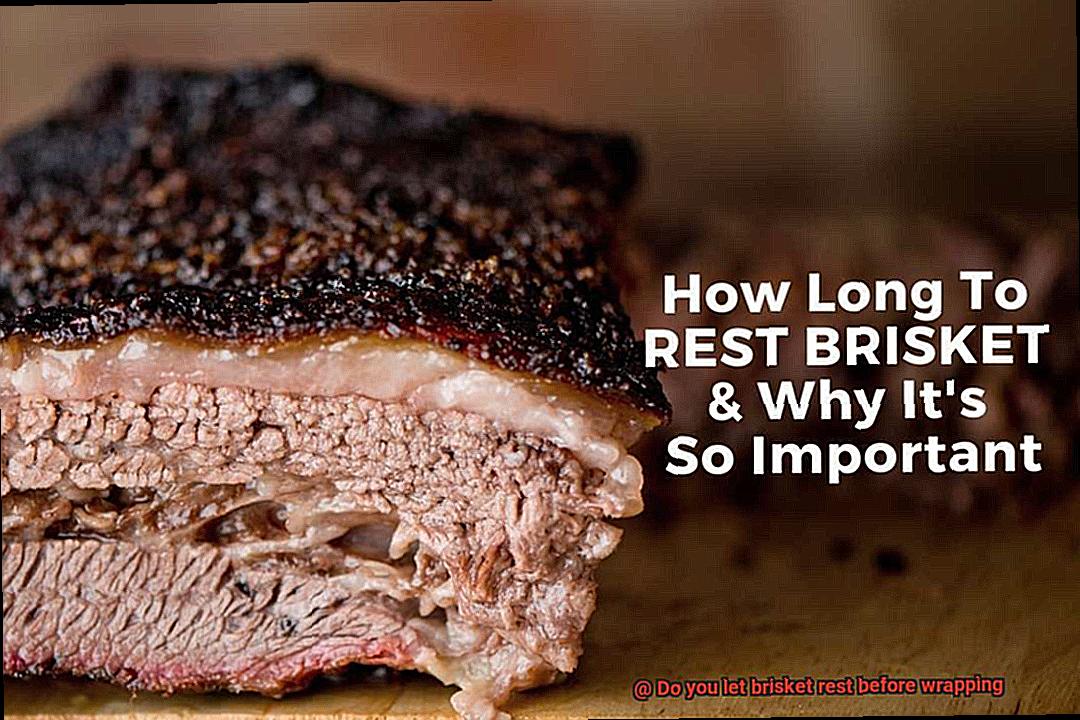
Texture concerns:
While resting improves tenderness and juiciness, excessive resting can cause the meat to become mushy or overly soft. This is especially true for well-done briskets, which are more prone to becoming mushy when rested for too long.
Uneven temperature distribution:
Proper cooking requires maintaining a consistent temperature throughout the brisket. Skipping the resting period can lead to uneven temperature distribution within the meat. The outer layers may cool down while the inner layers continue to cook, resulting in an inconsistent texture and doneness across different parts of the brisket.
Food safety concerns:
Skipping the resting period poses food safety risks. During resting, the internal temperature may fall into the “danger zone” (40°F – 140°F), optimal for bacterial growth. Allowing the brisket to sit at this temperature increases the risk of foodborne illnesses. Promptly wrapping the brisket helps retain heat and keeps it out of the danger zone.
Combining Resting and Immediate Wrapping
The debate between resting before wrapping and immediate wrapping when cooking brisket has long been a contentious topic among pitmasters. Both techniques have their own merits and drawbacks, but what if there was a way to harness the best of both worlds? By combining resting and immediate wrapping, you can create a tender, flavorful brisket with a mouthwatering bark that will leave your guests begging for more.
Let’s delve into the traditional method of resting brisket before wrapping. Resting allows the meat to continue cooking internally, resulting in a juicy and tender final product. As the collagen breaks down further during this period, the meat becomes even more succulent and bursting with flavor. Additionally, resting provides an opportunity to prepare additional ingredients or sauces, tidy up your cooking area, and get ready for the next step in the process.
On the other hand, immediate wrapping has its own set of advantages. By tightly wrapping the brisket in foil or butcher paper immediately after cooking, you create a steamy environment that helps retain moisture. This prevents the meat from drying out, ensuring a juicy end result. Furthermore, the wrapping acts as a mini-oven, speeding up the cooking process by accelerating collagen breakdown.
To combine both techniques effectively, begin by allowing the brisket to rest for approximately 30 minutes after cooking. During this time, the meat will continue to cook internally and the flavors will meld together harmoniously. Once this initial resting period is complete, wrap the brisket tightly in foil or butcher paper to lock in moisture and create a steamy environment that enhances tenderness.
By combining resting and immediate wrapping, you reap the benefits of both techniques. The initial resting period allows for continued cooking and flavor development while immediate wrapping retains moisture and expedites the overall cooking process.
However, it is important to be aware of potential downsides when employing this combination. Wrapping too early may result in a softer bark on the brisket, which might not appeal to those who prefer a firmer and more pronounced bark. Additionally, overcooking is a risk if you do not monitor the internal temperature of the meat diligently.
Conclusion
In conclusion, the art of letting your brisket rest before wrapping is an absolute game-changer when it comes to achieving barbecue perfection. This simple yet essential technique allows the meat to unwind, redistribute its succulent juices, and transform into a tender and flavorful masterpiece. By giving your brisket the well-deserved break it deserves, you unlock a world of benefits that will tantalize your taste buds and leave you craving more.
First and foremost, resting your brisket works wonders in ensuring that every single bite is cooked to absolute perfection. By allowing the internal temperature to even out during this crucial period, you guarantee a consistent and tender texture that will make your mouth water with each savory morsel. Not only that, but this resting process also allows the meat to soak up all those delicious juices, resulting in a flavor explosion that will send your taste buds into overdrive.
But there’s more. Resting your brisket also serves as a safeguard against sogginess. By giving excess moisture the chance to evaporate during this crucial time, you preserve the desired texture and maintain that delectable bark on the exterior of the meat. And let’s not forget how much easier it becomes to handle and slice when the meat firms up slightly during its well-earned rest.
Now, let’s talk about timing. While experts recommend letting your brisket rest for at least 30 minutes before diving in with your knife, some pitmasters take it even further by suggesting resting periods of two or three hours for ultimate tenderness. The duration may vary depending on factors such as size and cooking method, so trust your instincts and adjust accordingly.
To ensure maximum juiciness and tenderness during this resting period, wrap your brisket tightly in either foil or butcher paper. This protective layer acts as a shield against any potential loss of moisture while preserving all those mouthwatering flavors within. And don’t forget to find a clean cooler or insulated container to house your brisket, maintaining its temperature and ensuring it stays in its prime until you’re ready to serve.
Now, there may be some naysayers who argue against letting brisket rest before wrapping, citing concerns of overcooking or texture issues if rested for too long. However, fear not. By combining both resting and immediate wrapping techniques, you can strike the perfect balance and achieve exceptional results.
Allow an initial resting period followed by swift wrapping, and you’ll be rewarded with a tender and flavorful brisket that boasts a tantalizing bark.

